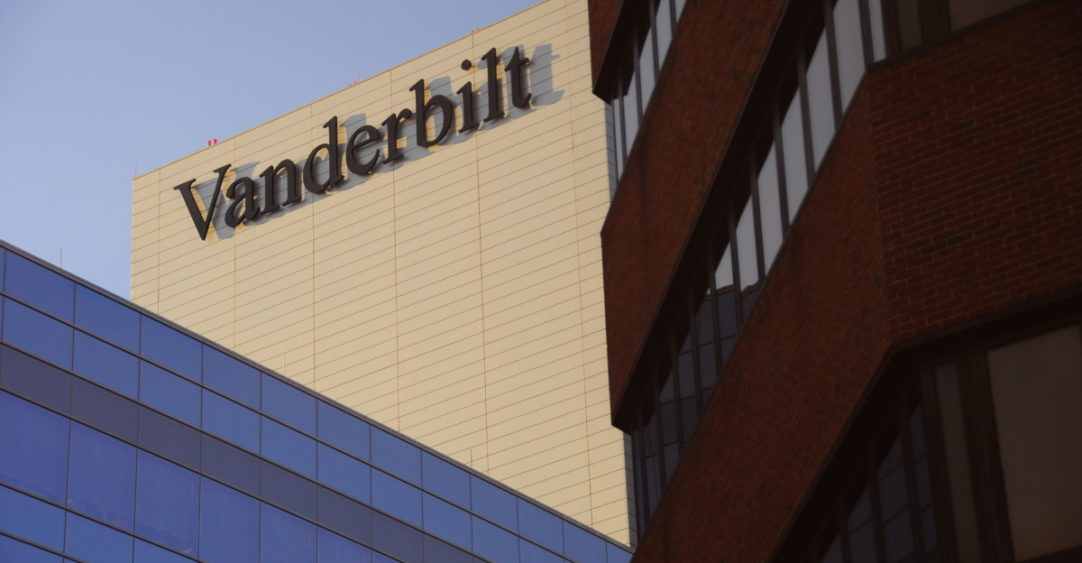
Vanderbilt Healthcare Design and Construction Symposium
Since 2007, the School of Engineering at Vanderbilt University has hosted their annual Healthcare Design & Construction Symposium. In a typical year, the highly sought-after event is attended by 150 healthcare professionals from across the country. This year, due to restrictions stemming from COVID-19, the symposium went virtual, presenting eight sessions over two days to over 350 attendees. As in years past, the sessions are presented primarily by healthcare owners and focus on current challenges they’re experiencing and industry trends they’re seeing.
COVID-19
- Most owners are anticipating the impact of COVID-19 will be long-term, not just the six- to nine- month window most people are thinking and talking about.
- The healthcare industry’s response to the anticipated needs of space to treat COVID patients was disproportional to the actual need. The universal decision to shut down elective surgeries and empty bed floors ended up being overkill and cost health organizations hundreds of millions of dollars.
- Open back up and get overrun with demands for elective cases.
- Hospitals saw a 50% decline in ER visits nationwide. This was attributed to many factors, including fear of going to hospital unless absolutely necessary, postponement of routine care, and fewer sports related injuries.
- Most owners said they are not planning on bringing back administrative and non-clinical staff (IT, billing, coding, risk, etc.). This will reduce the need for administrative space and associated costs.
- Lessons learned in being ready for the unexpected:
- None of the planning in the world would have put this scenario on the table. None.
- Who would have anticipated a 400% increase in O2 use? And having to monitor ambient indoor O2 concentration levels due to bypass (canula) O2 devices raising concentrations to dangerous levels?
- Dialysis centers being hit the hardest in terms of not being prepared to provide services within COVID safety standards and having to retrofit inpatient units to handle dialysis treatment.
- Value of a larger health system where smaller hospitals overrun with patients could offload to larger, regional facilities.
- How to manage end-of-life care and maintain separation and staff/family safety. Tough emotional issues.
Telemedicine
- Evolution of telemedicine/telehealth was a common topic, but different views of ongoing utilization of the technology. Organizations saw a steep increase in usage in response to COVID-19. One organization said they did three years’ worth of roll-out in three months. Others saw a 1,000-times increase in utilization.
- The prevailing consensus is that telehealth will settle back into the 30-50% range for long term utilization.
- Case remains to be made to the insurance companies that it is still valid channel of care, but will not ever be reimbursed at the same rate as in person visits. CMS will clamp down on HIPAA issues related to security.
- Anticipate an increase in virtual admissions, with care being administered virtually at home but treated like inpatient care.
- Doctors are recognizing that diagnosis done remotely omit body language, skin discoloration or texture. To compensate, they’re ordering lab tests that might not have been otherwise ordered.
Technology
- Technology will transform healthcare through AI/machine learning, digital twins-copy of physical assets/process/people(!)/systems.
- Virtual front doors will transform the registration and orientation process.
- EHR transportability issues and access to records across the health organization’s enterprise significantly more.
Environment of Care
- Care continues to shift away from the hospital environment. Outpatient revenue levels now approach that of inpatient care.
- New hospitals will have a smaller number of beds to care for high acuity patients. They will increasingly face higher acuity patients with a narrower focus, but with higher access to virtual care and support from specialists.
- Hospitals will have modalities limited to:
- ER, transplant, trauma, critical care
- Pandemic, epidemic, infectious diseases
- Holistic care: services for treatment of mental, social, and emotional care
- Some are saying we don’t need to build in acuity that is adaptable and flexible, which is expensive. In response to COVID, regulators cut the industry some slack in terms of provision of code required devices or features; it’s anticipated that, if needed, they’ll do it again. This eliminates the need to build an actual ICU adaptable room.
Planning, Design, Construction
- The public is beginning to put more emphasis on cost of care rather than network, history, or provider affiliations.
- Consolidation within the provider community will slow since COVID-19 depleted coffers, but will resume. For smaller and more rural facilities, the “need to be acquired” for survival reasons will become the “desire to be acquired” due to added benefits of being part of a larger organization.
- What do owners look for in a design team?
- People: The right team: assemble a team that has experiences above what the owner already has inhouse.
- Team strength, culture, values, and cohesiveness are important. Show where they’ve worked together before.
- Experience with equal scale, to know the magnitude of the undertaking
- Owners are less concerned with geography, virtual work neutralizing that. Most owners opening up to firms that can bring expertise, regardless of location
The income generated through the symposium goes toward funding tuition scholarships for the students in Vanderbilt University’s Construction Management graduate program. If you’d like to join Vanderbilt University’s School of Engineering mailing list to receive updates on future events, please visit here.







